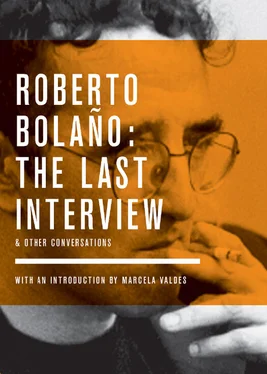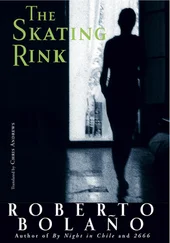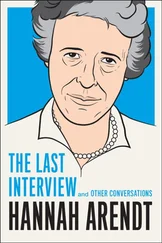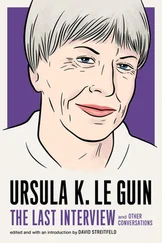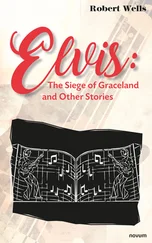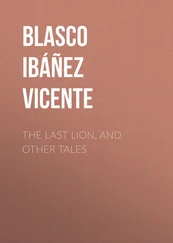Roberto Bolaño
The Last Interview and Other Conversations
INTRODUCTION. ALONE AMONG THE GHOSTS. MARCELA VALDES
THE PART ABOUT THE AUTHOR
Shortly before he died of liver failure in July 2003, Roberto Bolaño remarked that he would have preferred to be a detective rather than a writer. Bolaño was fifty years old at the time, and by then he was widely considered to be the most important Latin American novelist since Gabriel García Márquez. But when Mónica Maristain interviewed him for the Mexican edition of Playboy , Bolaño was unequivocal. “I would have liked to be a homicide detective, much more than a writer,” he told the magazine. “Of that I’m absolutely sure. A string of homicides. Someone who could go back alone, at night, to the scene of the crime, and not be afraid of ghosts.”
Detective stories, and provocative remarks, were always passions of Bolaño’s — he once declared James Ellroy among the best living writers in English — but his interest in gumshoe tales went beyond matters of plot and style. In their essence, detective stories are investigations into the motives and mechanics of violence, and Bolaño — who moved to Mexico the year of the 1968 Tlatelolco massacre and said he was briefly imprisoned during the 1973 military coup in his native Chile — was also obsessed with such matters. The great subject of his oeuvre is the relationship between art and infamy, craft and crime, the writer and the totalitarian state.
In fact, all of Bolaño’s mature novels scrutinize how writers react to repressive regimes. Distant Star (1996) grapples with Chile’s history of death squads and desaparecidos by conjuring up a poet turned serial killer. The Savage Detectives (1998) exalts a gang of young poets who joust against state-funded writers during the years of Mexico’s dirty wars. Amulet (1999) revolves around a middle-aged poet who survives the government’s 1968 invasion of the Autonomous University of Mexico by hiding in a bathroom. By Night in Chile (2000) depicts a literary salon where writers party in the same house in which dissidents are tortured. And Bolaño’s final, posthumous novel, 2666 , is also spun from ghastly news: the murder, since 1993, of more than 430 women and girls in the Mexican state of Chihuahua, particularly in Ciudad Juárez.
Often these victims disappear while on their way to school or returning home from work or while they’re out dancing with friends. Days or months later, their bodies turn up — tossed in a ditch, the middle of the desert or a city dump. Most are strangled; some are knifed or burned or shot. One-third show signs of rape. Some show signs of torture. The oldest known victims are in their thirties; the youngest are elementary-school age. Since 2002 these murders have been the subject of a Hollywood film ( Bordertown , starring Jennifer Lopez), several nonfiction books, a number of documentaries and a flood of demonstrations in Mexico and abroad. According to Amnesty International, over half of the so-called “femicides” have not resulted in a conviction.
Bolaño was fascinated by these cold cases long before the murders became a cause célèbre. In 1995 he sent a letter from Spain to his old friend in Mexico City, the visual artist Carla Rippey (who is portrayed as the beautiful Catalina O’Hara in The Savage Detectives ), mentioning that for years he’d been working on a novel called “The Woes of the True Policeman.” Though he had other manuscripts on submission to publishers, this book, Bolaño wrote, “is MY NOVEL.” Set in northern Mexico, in a town called Santa Teresa, it revolved around a literature professor who had a fourteen-year-old daughter. The manuscript had already topped “eight hundred thousand pages,” he boasted; it was “a demented tangle that surely no one will understand.”
Surely, it seemed so then. Bolaño was forty-three when he sent this missive, and as near to failure as he’d ever been. Though he’d published two books of poetry, co-written a novel and spent five years entering short story contests all over Spain, he was so broke that he couldn’t afford a telephone line, and his work was almost entirely unknown. Three years earlier, he and his wife had separated; around the same time he was diagnosed with the liver disease that would kill him eight years later. Though Bolaño won many of the short story contests he entered, his novels were routinely rejected by publishers. Yet late in 1995 he would begin an astonishing rise.
The turning point was a meeting with Jorge Herralde, the founder and director of the publishing house Editorial Anagrama. Though Herralde couldn’t buy Nazi Literature in the Americas —it was snapped up by Seix Barral — he invited Bolaño to visit him in Barcelona. There Bolaño told him about his cash problems and the desperation he felt over the many rejections he’d received. “I told him that … I’d love to read his other manuscripts, and shortly afterward he brought me Distant Star (later I found out that it had also been rejected by other publishing houses, including Seix Barral),” the editor recalls in an essay. Herralde, however, found the book extraordinary. Thereafter, he published all of Bolaño’s fiction: nine books in seven years.
During that time, as each volume found more readers than its predecessor, Bolaño toiled away on his demented tangle. The work involved writing, of course, but also investigating. By setting his novel in Santa Teresa, a fictional town in Sonora, rather than in Juárez, Bolaño was able to blur the lines between what he knew and what he imagined. But he was deeply concerned with understanding the circumstances facing Juárez and its inhabitants. Bolaño was already familiar with the region’s bleak, arid landscape — he’d traveled to northern Mexico during the 1970s — but the femicides didn’t begin until sixteen years after he had left for Europe, and he’d never visited Juárez. Since he didn’t know anyone living in the city, his knowledge was limited to what he could find in newspapers and on the Internet. From these sources he would have learned that Juárez had become the perfect place to commit a crime.
Once a watering hole for Americans during Prohibition, Juárez grew rapidly after NAFTA was implemented in the 1990s. Hundreds of assembly plants sprang up, luring hundreds of thousands of destitute residents from all over Mexico to take jobs that often paid as little as 50 cents an hour. The same traits that made Juárez appealing to NAFTA manufacturers — good roads, proximity to a large consumer market, an abundance of unorganized labor — also made it an ideal hub for narcotraficantes. By 1996, some forty-two million people and seventeen million vehicles were traveling through the city every year, making it one of the busiest transit points on the US-Mexico border and a favorite for illegal crossings. The town transformed itself into a crossroads for cheap and illicit commerce; as it did, poor, hardworking women began turning up dead.
Juárez and its fictional counterpart bear little resemblance to the cultural centers where Bolaño set most of his novels — even Distant Star takes place in the most important university town in southern Chile. There are no writing workshops amid the shantytowns of Santa Teresa, nor gangs of rebellious poets. Like all of Bolaño’s fiction, 2666 teems with writers, artists and intellectuals, but these characters come from elsewhere: from Europe, South America, the United States and Mexico City. Stuck in the badlands of northern Mexico, the same region where Cormac McCarthy’s gang of merry killers rampage in Blood Meridian , Santa Teresa is literally and culturally parched.
Читать дальше
